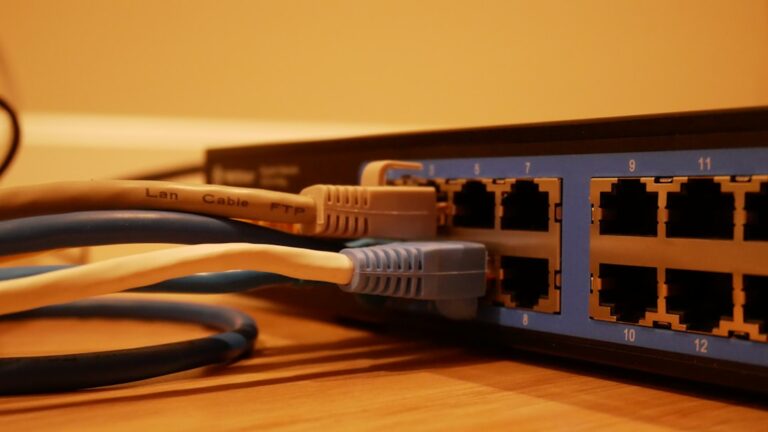Fault tolerance is a critical concept in the realm of computer science and engineering, referring to the ability of a system to continue operating properly in the event of a failure of some of its components. This capability is essential for maintaining the integrity and availability of systems, especially in environments where downtime can lead to significant financial loss or safety risks. At its core, fault tolerance involves designing systems that can detect, isolate, and recover from faults without interrupting service.
This can be achieved through various means, including hardware redundancy, software error handling, and robust system architecture. The principles of fault tolerance can be traced back to early computing systems, where even minor failures could lead to catastrophic results. As technology has evolved, so too have the methods for achieving fault tolerance.
Modern systems often incorporate sophisticated algorithms that allow them to predict potential failures and take preemptive action.
Understanding these principles is crucial for engineers and developers who aim to build resilient systems capable of withstanding unexpected challenges.
Key Takeaways
- Fault tolerance is the ability of a system to continue operating in the event of a failure
- Fault tolerance is crucial for ensuring system reliability and minimizing downtime
- Strategies for implementing fault tolerance include redundancy, error detection and correction, and graceful degradation
- Redundancy plays a key role in fault tolerance by providing backup components or systems
- Testing and monitoring are essential for ensuring fault tolerance and identifying potential weaknesses in the system
Importance of Fault Tolerance in System Reliability
The significance of fault tolerance cannot be overstated when it comes to system reliability. In today’s interconnected world, where businesses rely heavily on technology for their operations, any disruption can have far-reaching consequences. For instance, in sectors such as finance, healthcare, and telecommunications, even a brief outage can result in lost revenue, compromised data integrity, or jeopardized patient safety.
Therefore, implementing fault tolerance is not merely a technical consideration; it is a strategic imperative that directly impacts an organization’s reputation and bottom line. Moreover, the increasing complexity of systems further underscores the need for fault tolerance. As organizations adopt cloud computing, microservices architectures, and Internet of Things (IoT) devices, the potential points of failure multiply.
Each component in these intricate systems must be designed with fault tolerance in mind to ensure that the entire ecosystem remains operational. This holistic approach to reliability not only enhances user experience but also fosters trust among stakeholders who depend on these systems for critical functions.
Strategies for Implementing Fault Tolerance
Implementing fault tolerance requires a multifaceted approach that encompasses both hardware and software strategies. One common method is redundancy, where critical components are duplicated so that if one fails, another can take over seamlessly. This can be seen in server farms where multiple servers host the same application; if one server goes down, traffic is automatically rerouted to another server without any noticeable impact on users.
This strategy is particularly effective in high-availability environments where uptime is paramount. In addition to redundancy, software-based strategies such as error detection and recovery mechanisms play a vital role in achieving fault tolerance. For example, many modern applications utilize exception handling to manage unexpected errors gracefully.
When an error occurs, the application can log the issue, notify relevant personnel, and continue operating in a limited capacity rather than crashing entirely. Furthermore, implementing automated recovery processes can significantly reduce downtime by allowing systems to self-heal after a failure occurs. These strategies must be tailored to the specific needs of the system and its operational context to be effective.
Redundancy and Fault Tolerance
| Metrics | Description |
|---|---|
| Redundancy Level | The number of backup components or systems in place to take over in case of failure. |
| Mean Time Between Failures (MTBF) | The average time between failures of a system or component. |
| Mean Time to Repair (MTTR) | The average time it takes to repair a failed system or component. |
| Availability | The percentage of time that a system is operational and functioning. |
Redundancy is often considered the backbone of fault tolerance. By duplicating critical components or functions within a system, organizations can mitigate the risk of failure and ensure continuous operation. There are several types of redundancy that can be employed, including hardware redundancy, data redundancy, and network redundancy.
Hardware redundancy involves having multiple physical devices performing the same function; for instance, using multiple power supplies or hard drives in a server setup ensures that if one component fails, others can maintain functionality. Data redundancy is another crucial aspect of fault tolerance. This involves creating copies of data across different storage locations or systems to prevent data loss in case of hardware failure or corruption.
Techniques such as RAID (Redundant Array of Independent Disks) are commonly used to achieve data redundancy by distributing data across multiple disks while providing mechanisms for recovery in case of disk failure. Network redundancy ensures that if one network path fails, alternative routes are available for data transmission, thereby maintaining connectivity and service availability.
Testing and Monitoring for Fault Tolerance
To ensure that fault tolerance mechanisms are effective, rigorous testing and continuous monitoring are essential components of the process. Testing involves simulating various failure scenarios to evaluate how well a system responds under stress. This can include introducing faults deliberately to observe how the system behaves and whether it can recover as expected.
Techniques such as chaos engineering have gained popularity in recent years; they involve intentionally injecting failures into a system to identify weaknesses and improve resilience. Monitoring plays a crucial role in maintaining fault tolerance over time. By continuously tracking system performance and health metrics, organizations can detect anomalies that may indicate impending failures.
Advanced monitoring tools utilize machine learning algorithms to analyze patterns and predict potential issues before they escalate into significant problems. This proactive approach allows teams to address vulnerabilities promptly and maintain high levels of reliability.
Challenges in Achieving Fault Tolerance
Despite its importance, achieving fault tolerance presents several challenges that organizations must navigate. One significant hurdle is the complexity involved in designing systems that are both resilient and efficient. As systems grow more intricate with the integration of various technologies and components, ensuring that all parts work harmoniously while maintaining fault tolerance becomes increasingly difficult.
This complexity can lead to unforeseen interactions between components that may compromise reliability. Another challenge lies in balancing cost with the desired level of fault tolerance. Implementing redundancy and other fault-tolerant measures often requires significant investment in additional hardware and software resources.
Organizations must carefully assess their risk tolerance and operational requirements to determine the appropriate level of investment in fault tolerance strategies. Striking this balance is crucial; over-engineering a system may lead to unnecessary expenses while under-engineering could expose the organization to unacceptable risks.
Case Studies: Successful Implementation of Fault Tolerance
Examining real-world examples of successful fault tolerance implementation provides valuable insights into best practices and effective strategies. One notable case is Amazon Web Services (AWS), which has built its cloud infrastructure with fault tolerance as a core principle. AWS employs multiple data centers across various geographic regions, allowing it to provide high availability even in the event of localized failures.
By leveraging redundancy at both the hardware and software levels, AWS ensures that its services remain operational despite potential disruptions. Another compelling example is Netflix, which has embraced chaos engineering as part of its commitment to fault tolerance. The company regularly conducts experiments that intentionally disrupt its services to identify weaknesses in its architecture.
By doing so, Netflix has developed a highly resilient streaming platform capable of handling millions of concurrent users while minimizing downtime. Their approach highlights the importance of continuous testing and adaptation in maintaining fault tolerance in dynamic environments.
Future Trends in Fault Tolerance Technology
As technology continues to evolve, so too will the strategies and tools available for achieving fault tolerance. One emerging trend is the increasing use of artificial intelligence (AI) and machine learning (ML) to enhance fault detection and recovery processes. These technologies can analyze vast amounts of data in real-time to identify patterns indicative of potential failures, allowing organizations to take proactive measures before issues arise.
Additionally, the rise of edge computing presents new opportunities and challenges for fault tolerance. As more processing occurs closer to data sources—such as IoT devices—ensuring reliability at the edge becomes paramount. Future fault-tolerant systems will need to incorporate decentralized architectures that maintain resilience even when individual edge nodes experience failures.
In conclusion, as organizations continue to rely on complex systems for their operations, understanding and implementing effective fault tolerance strategies will be essential for ensuring reliability and maintaining competitive advantage in an increasingly digital landscape.
Fault tolerance is a critical aspect of system design, ensuring that a system can continue to operate in the event of a failure. Understanding the principles of fault tolerance can be enhanced by exploring related concepts in various fields. For instance, the article on the beginnings of calculus discusses foundational mathematical principles that underpin many algorithms used in fault-tolerant systems. By examining how early mathematicians like Newton and Leibniz approached problem-solving, we can gain insights into the logical frameworks that support robust system design.





















+ There are no comments
Add yours